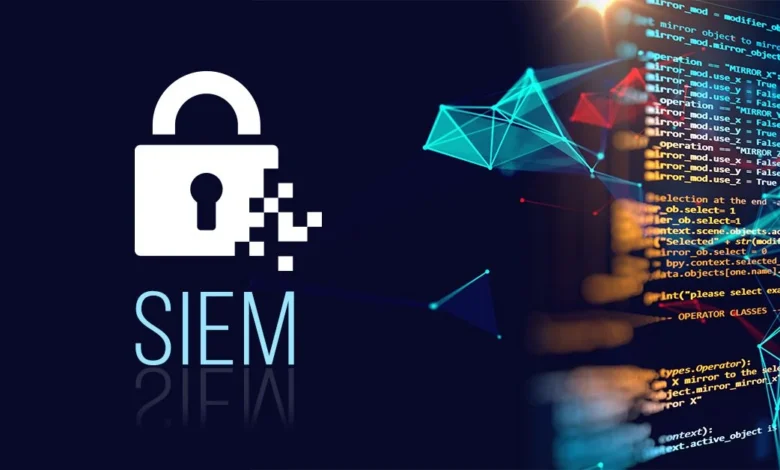How SIEM Helps You Respond to Cyber Threats

As cybersecurity threats become increasingly sophisticated, organizations face the daunting task of securing their digital infrastructure against various attack vectors. Security Information and Event Management, commonly known as SIEM, offers a cohesive solution tailored to this challenge. By combining several data sources into a single platform, SIEM systems enable real-time monitoring and analysis, enabling enterprises to react to security events quickly and efficiently. Quickly detecting anomalies and correlating them with potential threats significantly enhances an organization’s ability to protect its assets and ensure data integrity in a rapidly evolving digital landscape.
Implementing SIEM solutions is often a strategic pivot for many businesses, aiming to bolster their cybersecurity framework. This integration not only aids in detecting and managing security threats but also plays a crucial role in compliance and regulatory adherence.
Understanding SIEM
SIEM, or Security Information and Event Management, is an integrated solution designed to oversee an organization’s cybersecurity operations comprehensively. It helps aggregate logs and events generated within an IT infrastructure from various sources such as network applications, hardware, and security systems. SIEM’s ability to analyze this data in real-time allows for quickly identifying irregular patterns that could signify a breach or threat. As such, SIEM systems act as a centralized platform that enhances visibility across security landscapes and empowers security teams to react promptly to incidents with contextual insights. This centralized capability is fundamental in protecting against today’s complex cyber threats.
See also: The Role of AI Voiceovers in the Gaming Industry
SIEM in the Cyber Threat Landscape
The current cyber threat landscape is characterized by an ever-expanding breadth of vectors and potential vulnerabilities that malicious entities can exploit. SIEM tools are essential in this environment, offering advanced capabilities to vigilantly monitor, detect, and mitigate these threats. By continuously correlating data inputs from multiple endpoints and automatically flagging potential threats, SIEM systems enhance an organization’s defensive posture. Whether detecting lateral movement within a network or identifying phishing campaigns, SIEM systems equip security teams with the insights needed to maintain robust defenses. These capabilities make SIEM a vital component in any comprehensive cybersecurity arsenal, reducing the window for exploitation and potential damage.
Benefits of SIEM Solutions
Threat Detection and Incident Response
SIEM solutions significantly enhance threat detection and response by synthesizing many security events. Security teams can immediately focus on anomalies with real-time alerts, ensuring rapid and effective incident management. This enhanced visibility is crucial in minimizing potential security breaches’ impact and preserving sensitive information’s integrity and confidentiality.
Regulatory Compliance
One notable benefit of SIEM is its capability to assist organizations in meeting regulatory compliance mandates. With features that automate logging, auditing, and reporting, SIEM simplifies the complexities associated with regulatory adherence. This particularly benefits industries governed by stringent data protection and privacy regulations. SIEM can substantiate compliance efforts with comprehensive logs and documentation, reducing legal risk and ensuring regulatory conformity.
Operational Efficiency
In addition to its security benefits, SIEM bolsters operational efficiency across an organization. By automating data collection and analysis, SIEM minimizes manual labor and reduces the likelihood of errors during security monitoring. Thanks to this operational simplification, IT workers can more efficiently manage their time and resources, concentrating on strategic initiatives that strengthen an organization’s defenses.
Challenges of SIEM Implementation
Despite the substantial benefits, SIEM implementation can be fraught with challenges. These challenges often include the steep initial costs and complexity of integrating SIEM systems into existing IT infrastructures. Furthermore, since SIEM systems generate vast amounts of data, organizations can face difficulties in managing and analyzing these data volumes effectively. It necessitates having skilled personnel capable of interpreting SIEM outputs and making informed decisions, which can be a resource-intensive requirement for many organizations. Moreover, ensuring the seamless integration of SIEM solutions with existing security infrastructure without disruption poses an additional technical hurdle that requires meticulous planning and execution.
Strategies for Successful SIEM Deployment
Effective SIEM deployment demands strategic foresight and careful planning. Organizations should conduct thorough needs assessments to identify areas where SIEM can offer the most value. It’s vital to involve stakeholders from across IT and security departments to ensure alignment and capably address integration challenges. Comprehensive training programs and leveraging managed services can address the resource gap and streamline deployment. These efforts ensure that organizations fully capitalize on SIEM capabilities and lay the groundwork for adaptive strategies in securing their digital assets.
Emerging Trends in SIEM
As technology evolves, SIEM solutions incorporate cutting-edge advancements such as machine learning and artificial intelligence. These technologies promise to redefine SIEM by enabling greater threat detection and prediction automation. Enhanced analytics capabilities are expected to provide even deeper insights into potential vulnerabilities, paving the way for predictive security models. Staying informed about these trends allows organizations to future-proof their cybersecurity strategies and efficiently deploy resources to mitigate emerging threats. Organizations must continuously evaluate these technological trends to remain at the forefront of cybersecurity defense.
Conclusion
SIEM provides a crucial defense against cyber threats in today’s increasingly digital world. Despite the initial challenges in deployment, the comprehensive security and operational advantages of SIEM solutions are undeniable. SIEM significantly upgrades an organization’s cybersecurity posture by advancing threat detection, ensuring compliance, and streamlining operations. Embracing SIEM solutions with strategic planning and understanding emerging trends empowers organizations to secure their digital futures and maintain robust defenses against ever-evolving cyber threats.





